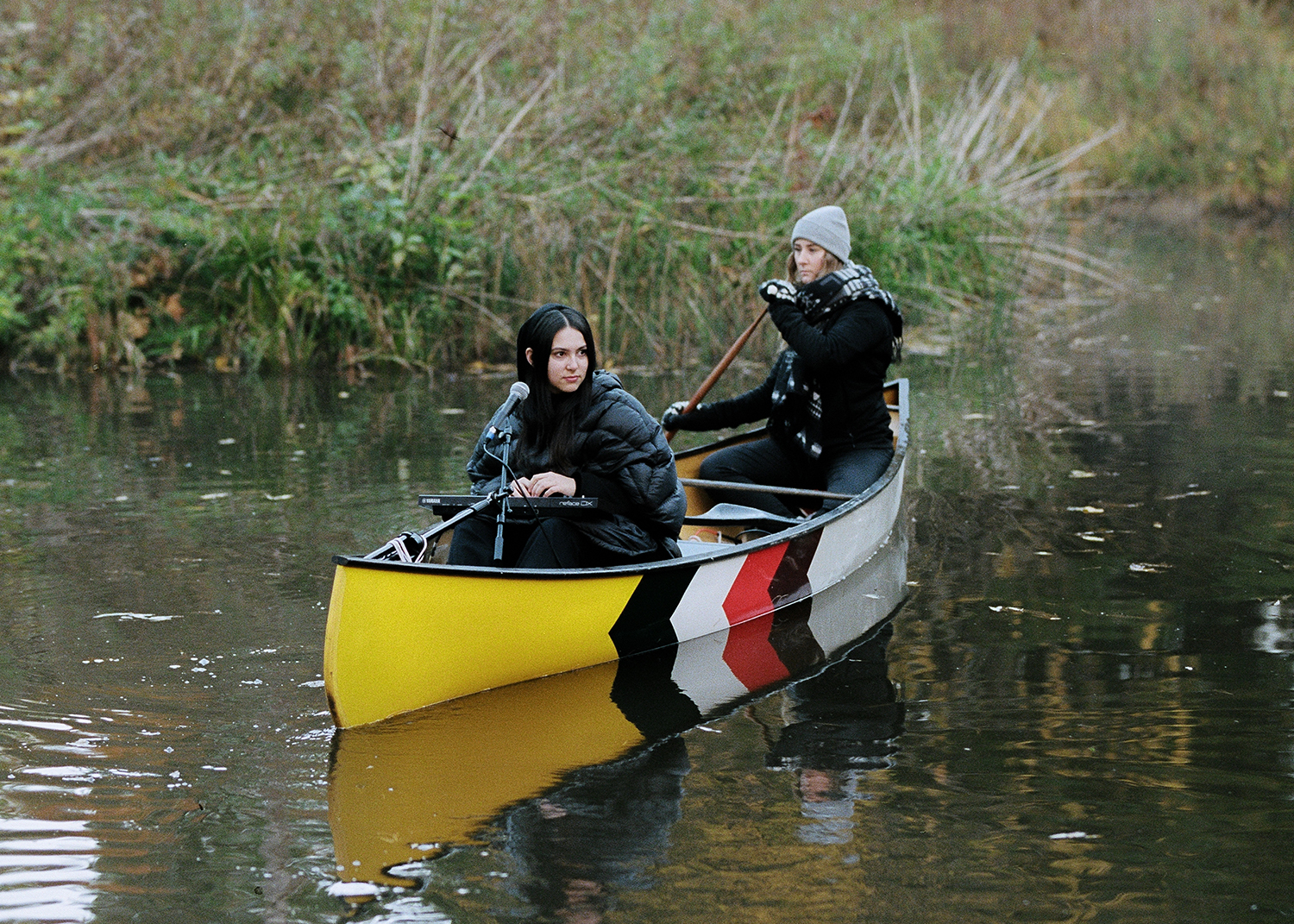New Narratives
A Digital Sanctuary for Your Attention
Over decades, Silicon Valley tech companies have mastered how to grab our attention. Now they want to protect it.
I remember the day I became a birder. It was early 2017 when I was visiting a local ecosanctuary called Zealandia, [in New-Zealand]. I lived down the road from it for years, but rarely entertained the possibility of going in. I had convinced myself that someone in their late twenties should not be interested in birds and dismissed Zealandia as an overpriced trap for safari shirt–wearing tourists. But I was unemployed with loads of spare time and decided that my thirtieth year was as ripe a time as ever for exploring more “mature” pursuits.

I soon learned how wrong my millennial pretensions were. Zealandia is the world’s first fully fenced urban ecosanctuary, and a shining example of how conservation projects can restore native wildlife. Thanks to Zealandia’s predator-control fencing, dozens of endemic birds native to New Zealand have been reintroduced to the city of Wellington. There’s the boisterous tūī, a territorial honeyeater that dive-bombs other birds and bellows out eclectic mixes of melancholic tones and R2-D2-like cackles. There’s also the comically rotund kererū, a pigeon that likes to sunbathe on branches that are far too slight for its impressive frame.
Although I was pleased to see Wellington’s fauna flourishing, my reasons for birding were more introspective and, admittedly, selfish. I found Zealandia to be an ideal space to disengage from the everyday—somewhere to escape from emails and commitments and to let my mind wander. Birding has an enticingly slow and deliberate cadence, in contrast to the frenetic pace of the outside world, and spotting birds requires focus, patience, and a good sense of direction—skills my smartphone has conditioned me to forget. In my mind, Zealandia was not only protecting birds, but my attention too.
Disconnection gone global
I’m not the only person seeking disconnection. Last year, TechRadar reported that 36 million Americans had deleted the Facebook app from their phones and 19 million had deleted their accounts altogether. Digital “detoxing” has become popular and, similarly, books with the titles Digital Minimalism and Slow Media have appeared in the windows of bookstores everywhere. Even the titans of Silicon Valley have become anti-social. Twitter co-founder Jack Dorsey recently attended a silent Vipassana meditation retreat in Myanmar, while Apple CEO Tim Cook reportedly forbids the use of iPads around his dinner table. Other Silicon Valley executives send their children to Waldorf tech-free schools, while former vice-president for user growth at Facebook, Chamath Palihapitiya, admits that he doesn’t let his children even touch social media. The trend is similar in Europe. In 2017 U.K. communications industry regulator Ofcom found that 34 per cent of British users had taken a break from the internet, and in France they’ve enshrined the “right to disconnect” into labour law, requiring medium-to-large-sized companies to create a company policy that minimizes tech use to reduce work burnout.
According to anthropologist Joanna Cook, at the heart of the disconnection movement is a crisis of lost attention. In the last couple of decades, smartphones and other smart devices have entered our environment, upping the ante of stimuli vying for our attention. As such, we’ve never been so distracted.
Moreover, psychologist and happiness expert Paul Dolan believes misplacing our attention makes us miserable: “The fundamental reason why most of us aren’t as happy as we could be is that we allocate attention in ways that are often at odds with experiencing as much pleasure and purpose as we could.”
As our lives become more hyperconnected, disconnection becomes the only answer to take back our attention and reclaim our well-being. But curiously, people are turning toward technology to disconnect, rather than away from it.
Headspace and other meditation apps have become popular, as well as phone-monitoring apps such as Moment or Mute, which provide regular feedback on time spent on devices. These apps reallocate attention for the benefit of the user. Other users tweak their smartphone settings for the same effect, either turning on Airplane Mode to block notifications or changing the coloration to greyscale to make their device less alluring. But these options to disconnect are a little crude and require you to know precisely when you want to disconnect. I’ve come to learn that disconnecting is a bit like saving money—most effective when set up in advance, so you can forget about the need to do it. Disconnection should be about reducing cognitive load and not increasing it.
Technology saved by psychology
Working toward my Ph.D., I’m conducting research on psychological approaches to optimizing disconnection. Through this research I was connected with Zack Prager, who I met at a café in the Gaslamp District in San Diego. Prager had engineered a technology to create internet‑ free zones, and I was curious to learn about his motivations. He gestured toward the street: “This environment is clearly made for driving, which gets interrupted all the time by noisy agents, it’s terrible, or at least terrible to me. But you could redesign this whole Gaslamp District where you had to walk around it, right?” Prager is a positive technologist, someone who combines software development and behavioural psychology to create technologies that enhance people’s well-being.
According to Prager, the typical urban environment—comprising free wifi and mobile networks—encourages constant connectivity, which isn’t always conducive to how people want to spend their time. He says, “We want to create environments where cell phones don’t work. The idea is to sculpt the environment [in a way] that’s good for you.” His mission could almost be considered paradoxical.
Many parts of the world still suffer due to limited internet connectivity; yet Prager suggests that restricted internet access is exactly what privileged parts of the world now desire.
Has the West reached peak internet? Prager’s invention assumes we have. It is called Ransomly, and it’s a small beacon device that emits a Bluetooth signal to send a blocking protocol to smartphones within a 12-foot radius. For the block to work, users must download the Ransomly app and consent to the block, because “it would otherwise be hacking,” admits Prager.
If you’re older than 30, you probably remember the time when the internet could only be accessed in one part of the house, on a single computer. Now that some of us in this generation are becoming parents, many of us want to raise our children in an environment that benefits from wifi-free spaces. But Prager doesn’t want to limit his product to the home. He hopes Ransomly will be used in universities and cafés to create optimal spaces for study or face-to-face meetings: “Then if people wanted to, they could opt in via our app to make all of their Starbucks quiet.” In other words, he envisions a new type of tech-enabled disconnection space—a digital sanctuary for focused attention.
Technologists like Prager understand the value of attention because their industry has mastered obtaining it. Part of the reason putting our phones down has become so challenging is because companies like Facebook and Google prey on our evolutionary instinct to be alert. Using the latest techniques in behavioural science, tech giants are able to turn our habits into profit margins. When we spend more time on their platforms, they sell more ads. So to create more repetitive use, notifications are coloured red and newsfeeds turned bottomless.
Another tech insider I spoke to, Max Stossel from the Center for Humane Technology, told me that psychological design has trickled into other tech business models: “Netflix found binge- watching was one of the key drivers of subscriptions. So they found that getting more people to binge-watch and using [persuasive] tactics for that [such as the auto-playing video] ends up helping their bottom line.”
Another psychological weakness our species has to deal with is called “priming,” which describes how we respond to unconscious cues in our environment. For example, addiction experts argue that the branding on cigarette packs aids in keeping people’s attention, priming us to keep smoking. As a result, they advocate for universally plain packaging. The tech equivalent of this is probably Siempo, an app that strips Android phones of any cues that are designed to keep users scrolling and batches notifications on a schedule chosen by the user. CEO Andrew Dunn tells me that Siempo “takes a behavioural design approach [that] manipulates your triggers and motivations to create a digital environment that aligns with your intentions.” The aim of Siempo is therefore to eliminate mindless phone scrolling.
The Light Phone is a device even more protective of people’s attention, offering a more permanent digital sanctuary for those who want it. It is a single communication device (the size of a credit card) restricted to transmitting phone calls, enabling people to disconnect from their smartphones without having to go off the grid. Founder Joe Hollier’s initial hunch “was that artists and other creatives were the ones that were immediately able to go light, so to speak, and treat the anxiety that comes with leaving the smartphone with the things they already loved. Musicians go light and start playing piano and they forget about Instagram.” Companies like Light Phone and Siempo duly recognize that the luxury of disconnecting must find a compromise with our innate need to feel safe.

The new digital gap
Since the days of Ted Nelson and Steve Jobs, Californian start-up culture has long been exploring new ways to transform the mind and self-optimize. Spaces equipped with wifi blocking tools, tech-free schools, and other digital sanctuaries may just be the latest iteration of this mind-emancipation trend. But there are social ramifications for carving out individualized tech-free spaces: most tech-enabled disconnected spaces are neither free nor cheap to access, and are therefore not available to everyone.
Digital detoxes, ayahuasca ceremonies, meditation classes—these new methods of attention-reorientation are in vogue in tech circles for a reason.
There is already research showing that underprivileged families on average spend more time in front of screens. Digital sanctuaries, therefore, risk turning disconnection into an exclusive experience that could create new inequalities, from disproportionate vulnerability to developing anxiety and depression. We may see the emergence of a new digital divide, where the “haves” are not distinguished by having ready access to the internet, but by unparalleled means of escaping from it. In contrast, the “have-nots” will remain lost in the digital noise, forever glued to their devices.
I’ve asked the designers of these digital sanctuaries whether they’re aware of these risks. Prager acknowledges that disconnected space could become a luxury commodity like organic produce from Whole Foods, which he criticizes as costing “a whole paycheque.” And Hollieris also aware of the tension of selling disconnection as a solution to constant connection, saying, “I don’t like the idea of selling something as a solution. The Light Phone really is not a solution. It’s one piece of a holistic approach to carving how you live your life.” However risky culturally, commodifying disconnection is also a business risk. It is neither a product nor a service yet, and its market is still uncharted territory. Siempo is currently being offered for free, and CEO Andrew Dunn is uncertain whether the app is even capable of being profitable: “How do we become a business? Fundraising is really challenging because it’s such an undefined market category. No one’s really had big success in this space yet.”
There is also something odd about technology being the cause and solution to constant connection. Google and Apple are themselves offering tools to help users to disconnect, respectively releasing Digital Wellbeing and Screen Time last year. Can the predators of our attention simultaneously become our protectors? The nascent disconnection industry is rife with paradoxes, but there remains some hope.
The halo effect
I hear familiar chirps, grunts, and wheezes outside the window of my kitchen. I’m working from home, but the melody is a welcome distraction. If I peer outside, I’ll probably spot a tūī perched in the neighbouring kōwhai tree. This tūī has visited me before and likes to announce its presence. A less-documented success of Zealandia is the “halo effect,” whereby native birds have left the enclosure and gone to settle in the wider Wellington area. The halo effect means that people beyond the enclosures of Zealandia get to freely enjoy the fruits of its labour—in this case the beauty of birdsong.
Perhaps we should hold out hope for a halo effect to result from the rise of digital sanctuaries. Perhaps the benefits of disconnection—solitude, reverie, focused attention, and self-reflection—will permeate design ethics, meaning that psychological design practices that discourage disconnection are nipped in the bud. If we could design technologies to be less exploitative of our attention, per- haps we wouldn’t have to create extravagant means to disconnect at all. In the meantime, however, instead of looking to technology for solutions, maybe we should be looking to nature to disconnect, and take a phone-free stroll outside or gaze out the window to daydream every now and then.
For now, at least, this much is still free.















